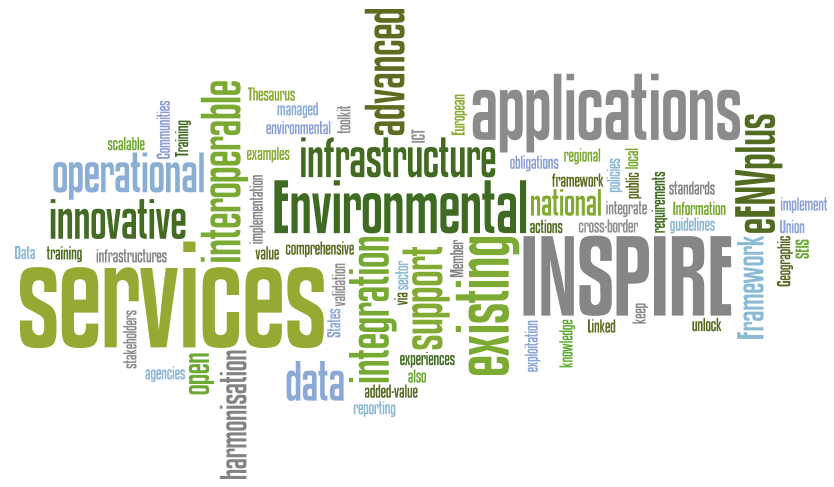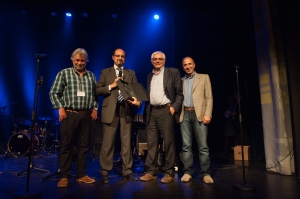What is eENVplus?
This will be achieved through the harmonisation and integration, within an operational framework, of existing services resulting from previous European initiatives (funded projects, good practices, EU/national/local experiences) and it will allow overcaming of cross-border/languages barriers.
eENVplus provides not only the ICT infrastructure but also the documentation and support to ensure delivery of an operational infrastructure and which can become profitable, based on a well-defined organisational model and a tutored training framework.

European projects background
- NESIS – A Network to enhance a European Environmental Shared and Interoperable Information System (ICT PSP project)
- NATURE-SDIplus – Best Practice Network for SDI in Nature Conservation (eContentplus project)
- BRISEIDE – Bridging services, information and data for Europe (ICT PSP project)
- OneGeology Europe – Making digital geological spatial data more easily discoverable, accessible and useable
- HUMBOLDT – Towards the Harmonisation of Spatial Information in Europe (FP6 GMES project)
- CAFE – Technical IT solutions for data exchange and reporting under the CAFE Directive using INSPIRE services
Methodology
The project development will be articulated according to a cyclic implementation approach typical of agile software life-cycle methodologies.”
Openness
The project maximises openess through:
- Extensive support for interoperability protocols.
- Software infrastructure based on open standards.
- Modular/scalable/compliant service oriented architecture.
- Ensuring interoperability with EU directives (e.g. INSPIRE).
- Available as Free and Open Source Software.
- Providing data in an open form, in line with the objectives of the Digital Agenda for Europe (DAE).
Impact
eENVplus impact factors:
- Make public geographic information accessible, reusable, harmonised and validated (against the relevant INSPIRE Data Specifications).
- Ensure use and re-use of interoperable added value eEnvironment services, in line with the DAE.
- Increase the efficiency of the public sector on environmental reporting obligations.
- Contribute to the growth of the private sector (particularly SMEs) with added value services for new businesses.
Target users
- Administrations and public bodies/agencies at different levels
- Providers of environmental services
- Providers of IT services
- Research groups
- Non-Governmental Organisations (NGOs) and Citizens
- National Environmental Authorities (National Environmental Agencies, EIONET, Environment authorities at EU level)
- Local and Regional Environmental Authorities (starting from partners‘ networks)
- Thematic Communities (European Topic Centers, INSPIRE National Contact Point, etc.)
- Private Sector and SMEs

 eEnvPlus was selected as the winner for its continuous efforts to apply GI-standards from CEN/TC 287, ISO 211 and OGC to support the implementation of INSPIRE components in the environmental field.
eEnvPlus was selected as the winner for its continuous efforts to apply GI-standards from CEN/TC 287, ISO 211 and OGC to support the implementation of INSPIRE components in the environmental field.

